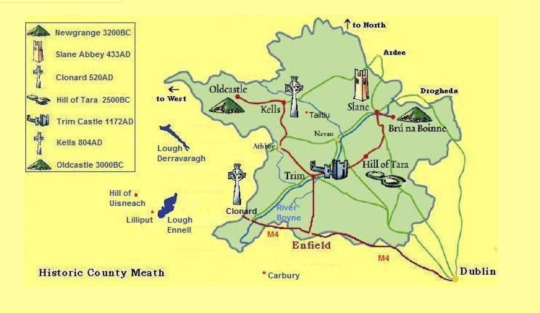#i made this post under a readmore on main a million years ago so here u go my beloveds
Text
Lebor Gabála Érenn, (ENG: The Book of Invasions) is a collection of poems and prose narratives in Irish that serve as a mytho-history of Ireland from the creation of the world to the Middle Ages.
The AF books reference two locations that appear in Leabhar Gabhála/Lebor Gabála Érenn (the book of invasions): Tara and Teltown.
The reference to Tara is explicit, as in book one Holly mentions it being a site of great magical import, whereas the reference to Teltown is implicit.
In reference to “the battle of Tailte”, it is likely that “Tailte” is a different spelling of Taillte/Tailtiu, who in the mythology of Ireland (though there is some uncertainty regarding this due to revisions of the original myths after the Invasion of Normandy) died of exhaustion after making the plains of Ireland fit for agriculture. Her adopted son, the Tuatha Dé Danann named Lugh, then established a harvest festival/ set of games to honor her memory — this was to be called the Fair of Tailtiu (Óenach Tailten), and the importance of this festival was likely roughly equivalent to that of the Feast of Tara (both sites are located in County Meath).

Image: Enfield Meath, “Visiting the Area”. http://www.enfieldonline.net/legends-and-places
I invoke this myth specifically because of the goddess Tailtiu’s story, which deals with the idea of the invasions of Ireland.
There are multiple waves of invasion in Irish mythology, but I’ll mainly deal with the Fir Bolg, Tuatha De Danann, and Milesians. Essentially, Tailtiu was part of the Fir Bolgs, and most of her kind were displaced after the invasion of the island by the magical Tuatha De Danann (of which her son Lugh was one). However, despite the power of the Tuatha De Danann (essentially being pagan gods and goddesses), they were overcome by the Milesians, the human proto-celts according to the story.
The reason for their conflict varies. In some versions, some Milesians had visited the island years prior and were killed by the Tuatha De Danann (who then proceeded to shield the island with magic), and the return of the humans is due to wanting vengeance. In others, some Tuatha de Danann had killed one of the relatives (Íth) of the leader of the Milesians (Míl Espáine), so the return of the Milesians is an attack to avenge Íth’s death. However, in some versions, the Milesians simply land on the island and wish it to be theirs, and thus the fighting commences.
It’s not… entirely clear how the humans beat the Tuatha De Danann, but over the course of many battles, they prevail. Specifically, one of the battles that led to the downfall of the Tuatha De Danann was the battle of *teltown* or the battle of *Tailtiu* — the battle of Tailte to which Colfer refers!
Following their defeat, the Tuatha De Danann retreat underground to live in hiding from the humans for the rest of their days in the otherworld, and in living in this diminished form of power, they become the sídhe, the fairies of Ireland. At this point, you have the folktales where some fairies remain aboveground and toy with humans, while in others, humans travel below ground to barter for magical miracles. That’s where you again start to get some overlap with the mythos of AF, IMHO.
However, Colfer plays it pretty fast and loose when it comes to borrowing from mythology versus generating new lore for the series, and I would be fascinated to see different ways to situate the People in historical and/or mythological context(s). I’m also definitely interested by the idea of how to holistically deal with the past of the People, as I think any attempt to paint them in black-and-white terms of morality is 1) boring and 2) misses out on the opportunity to explore that they’re a completely different civilization that carries within it different cultural mores, religion(s), and ethical systems — if anything, I don’t see them as being morally grey so much as I see them functioning in a wholly different manner that just so happens to overlap in some places with common human systems of morality (e.g. vis a vis perception of violence, environmental value, etc).
From that perspective, I’d say that it was likely two groups of relatively equal power antagonizing each other, if one synthesizes the lore from the myths with the books. I think the instigating event could vary, though, as I’ll admit I’ve not given much thought to specifically that topic.
#artemis fowl#i made this post under a readmore on main a million years ago so here u go my beloveds#long post
29 notes
·
View notes